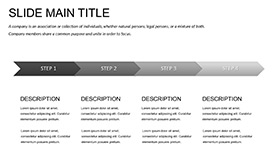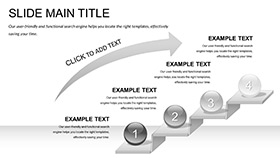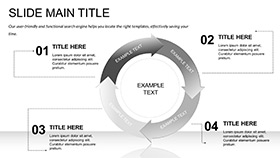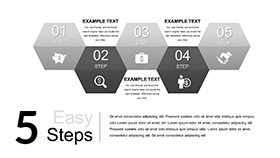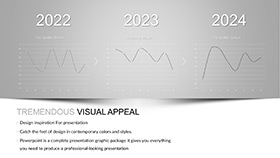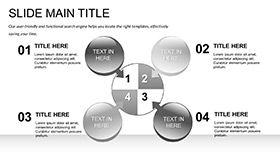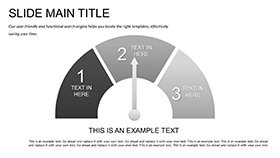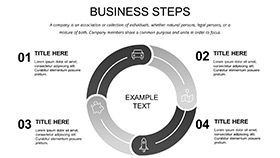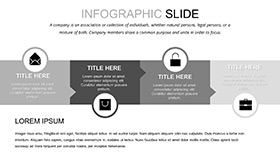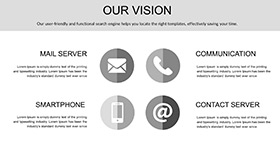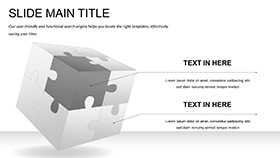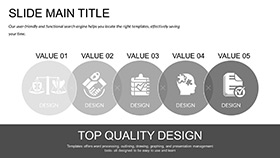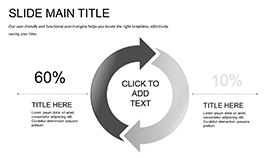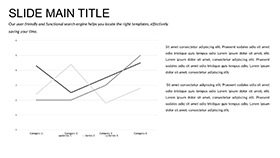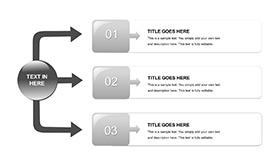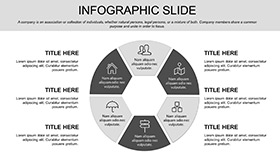Step into the fascinating realm of subatomic particles with the Atom Isotopes Science Keynote Template, a powerhouse for science educators and researchers alike. This deck, boasting 28 intricate diagrams across three masters and backgrounds, invites you to visualize the invisible - from proton-electron dances to isotope stability. Ideal for lectures on chemistry, physics, or even medical applications, it turns theoretical concepts into tangible explorations, all while fitting snugly into Keynote's ecosystem from 2016 onward.
Central to its design is the orbital model in Diagram 2, where concentric rings represent energy levels, customizable with your data on electron configurations. Or harness the branching tree in Diagram 14 for evolutionary timelines of elements, branching from hydrogen to heavier isotopes. Seven color schemes, drawing from spectral lines and lab hues, ensure your slides pop without clashing.
Essential Features for Scientific Storytelling
The template's diagrams are a treasure trove of precision. Diagram 6's lattice structure mimics crystal formations, adaptable for material science talks. With multifunctional infographics, you can layer annotations over atomic models, revealing decay processes step by step.
- Precise Illustrations: 28 diagrams including orbits, bonds, and spectra for atomic depth.
- Background Versatility: Three themes - lab bench, starry void, or periodic table grid.
- Scheme Adaptability: Seven palettes for thematic accuracy, from cool blues to vibrant reactions.
These tools empower you to demystify science. A physics professor could use Diagram 20's vector field to illustrate electromagnetic forces around isotopes.
Assembling an Isotope Lesson: Step by Step
- Select the Frame: Pick the starry background for cosmic origins discussions.
- Embed Key Models: Integrate Diagram 9's nucleus diagram, labeling protons and neutrons.
- Build Interactions: Add hyperlinks to sub-slides for detailed half-life calculations.
- Refine Aesthetics: Choose a scheme matching element colors for visual harmony.
This method crafts flows that mirror scientific inquiry, fostering deeper understanding.
Applications Across Science Disciplines
In classroom settings, deploy Diagram 11's balance scale for stable versus radioactive isotopes, weighing pros and cons. For medical conferences, adapt the chain reaction slide in Diagram 26 to explain radiopharmaceuticals in diagnostics.
Researchers appreciate its utility in grant proposals - use the timeline in Diagram 4 to chart discovery milestones, from Rutherford to modern accelerators. The template's clean lines ensure focus on facts, not frills.
Insights for Impactful Science Presentations
Engage by starting with a macro view, zooming into atoms via builds. Collaborate via shared Keynote links for peer reviews. Unlike basic slides, this offers scientific icons ready for import, streamlining prep. Keep scales consistent for accuracy, and test on projectors for clarity.
Why Science Communicators Choose This Template
It bridges the gap between jargon and accessibility, with motifs like helixes for DNA ties or waves for quantum behaviors. Integrate with Numbers for dynamic data, or export for journal supplements. It's a catalyst for curiosity-driven decks.
Illuminate your next scientific discourse - secure the Atom Isotopes Science Keynote Template and orbit toward excellence.
Frequently Asked Questions
Are the atomic models scientifically accurate?
Yes, based on standard Bohr and quantum representations, editable for specifics.
Can I add animations to particle movements?
Certainly, Keynote's paths work well with vector elements.
What fields does it best suit?
Chemistry, physics, and introductory medicine presentations.
Is it compatible with iPad Keynote?
Fully, with touch-friendly editing tools.
How do I customize isotope labels?
Simply select and type - fonts scale automatically.






